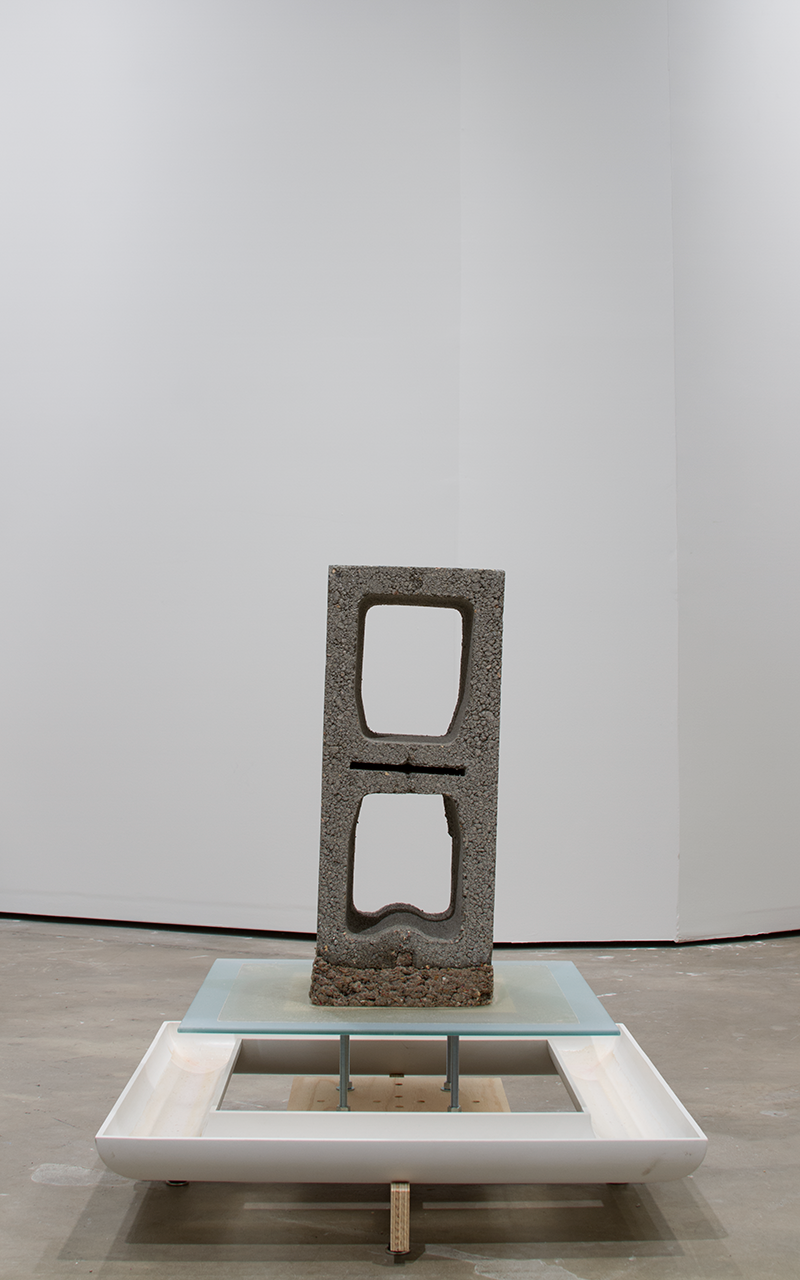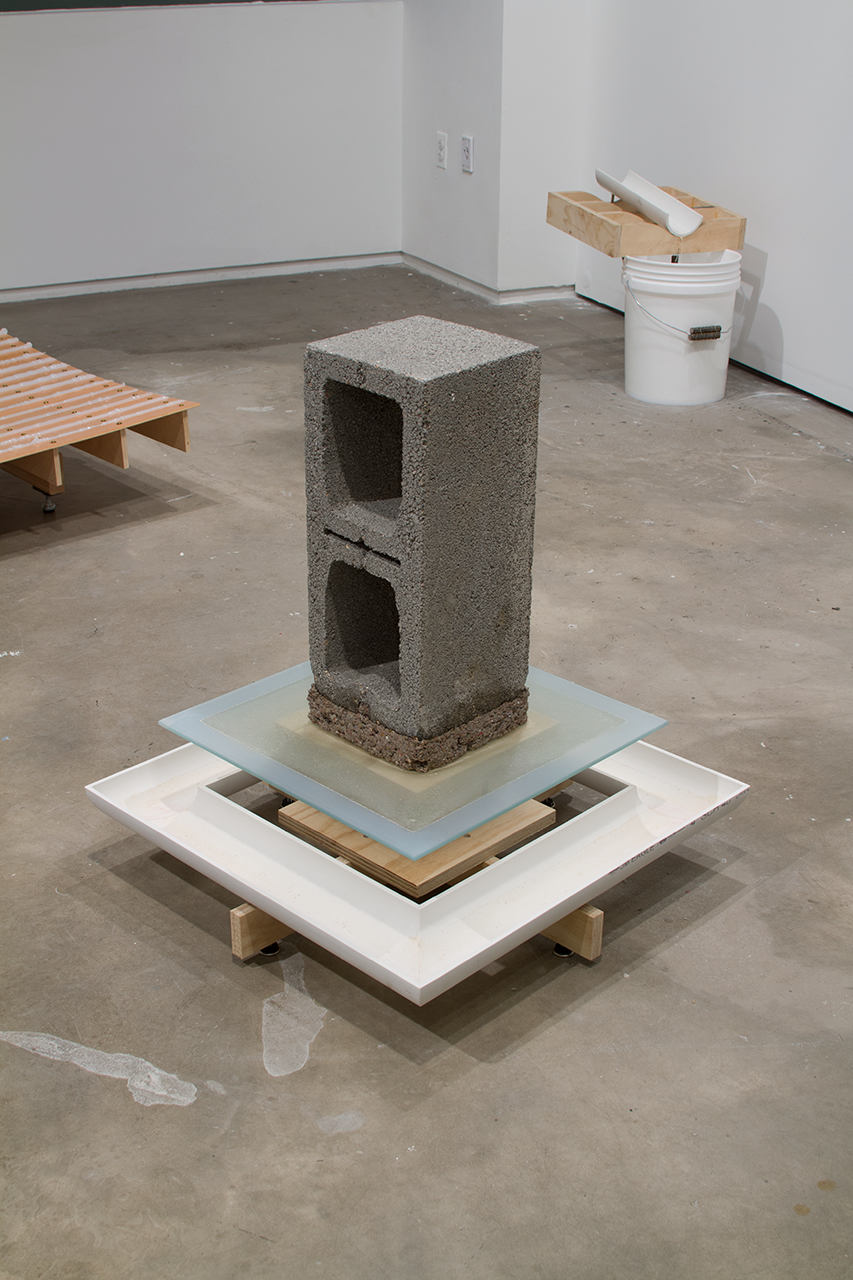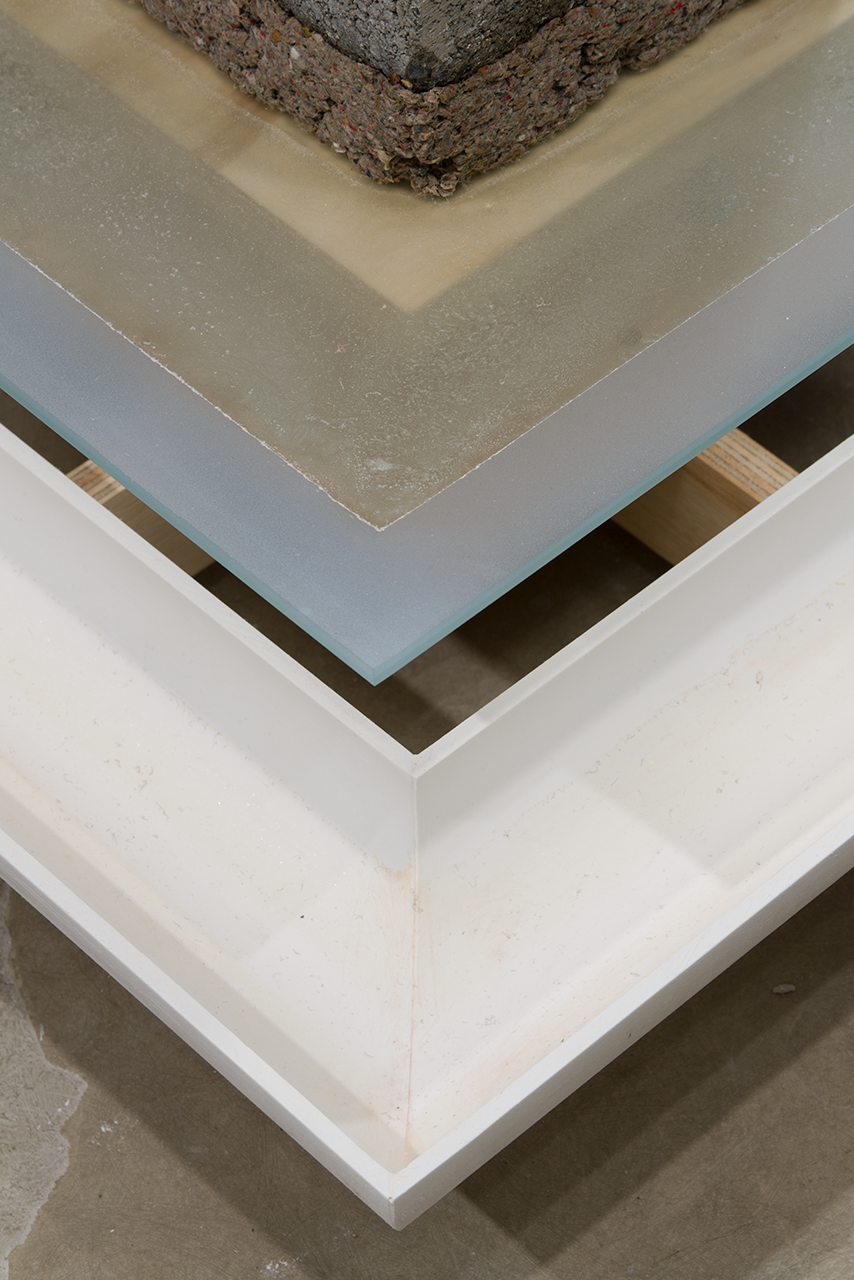28.5” x 24” x 24”
concrete, cellulose insulation, glass, hydrophobic spray, pvc, plywood, steel




Cinder Compression relies on the weight of standard cinder block to compress paper pulp (cellulose insulation). The pulp is mixed with water, aiding in its ability to be compacted. The water from the pulp is pushed onto a 18 inch square plate of glass which has had the outer inch and half treated with hydrophobic spray. The excess water is pushed off the edge of the glass and lands into a square PVC trough, leaving a standing square puddle on the glass roughly 15 inches across. During the opening the hydrophobic spray began to fail, allowing water underneath the leading edge. The spray stayed intact and acted as a flexible membrane which kept the water trapped between the glass and itself, expanding the puddle to 18 inches square. Over a 24 hour period all of the standing water had evaporated and crystalline structure had formed on the glass because of the interaction of the water with the hydrophobic spray. Over a longer period of time the remaining water in the pulp itself will evaporate, leaving a solid slab of material. The last image pictured shows this piece with the wet cellulose insulation as the hydrophobic spray began to fail. All other images pictured show the piece after the standing water had evaporated.